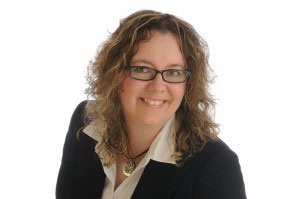I had the great pleasure of being able to ask Dr. Marie Haynes a few questions about E-A-T. What it is and how you can improve it.
Dr. Marie Haynes is a well-known SEO expert from Ottawa, Canada. She speaks a lot about Google penalties, algorithm changes such as Panda, Penguin, and also Google’s Quality Raters’ Guidelines.
Paul Lovell: What is E-A-T?
Dr. Marie Haynes: E-A-T stands for “Expertise, Authoritativeness, and Trust”. Google mentions E-A-T many times in its Quality Raters’ Guidelines. Google also mentioned E-A-T in a whitepaper recently published, saying, “Where our algorithms detect that a user’s query relates to a “YMYL” topic, we will give more weight in our ranking systems to factors like our understanding of the authoritativeness, expertise, or trustworthiness of the pages we present in the response.
As such, if a site wants to rank well for Your Money or Your Life queries, it is very important that it has all three elements of E-A-T.
PL: How does the Quality Rater Guidelines, help website owners?
DR M H: Google’s Quality Raters’ Guidelines were created as a guideline to teach human quality raters how to assess high and low-quality issues on websites. In early 2017, we noticed at MHC (Marie Haynes Consulting) that many sites coming to us for site audits after seeing traffic drops were sites that were generally technically sound, but were being outranked by businesses that had all of the components of E-A-T as described in the QRG.
Google has said that the QRG do not exactly reflect Google’s algorithms, but that they fundamentally show us what they want the algorithm to do. We believe that if something is in the QRG as a sign of high or low quality, it is something we should be assessing for our clients.
PL: How can you improve E-A-T?
DR M H: Because E-A-T has many components, there are many things that can be worked on in order to see improvements in this area. Expertise is a tough one to improve upon, but we have seen some cases where we felt it helped by simply adding more “braggy” information on expertise on the homepage and about the page in an effort to show potential readers why this website is an expert on its topics.
We believe authority is heavily tied to links. The QRG talks about how important it is to have other experts recommending you as an expert. In other words, do you have people linking to you because they truly want to recommend your content, your business, or anything else? If you have true recommendations from authoritative places, this contributes to the “A” in E-A-T.
The “T” in E-A-T is the most interesting to me. There are so many elements of trust that we believe Google is measuring. These may include your online reputation, whether or not you have easy to find contact information, whether your refund policy is available online, whether you quote medical sources appropriately, and also, for medical sites, whether you write on topics that contradict general scientific consensus. There are many other elements as well.
What we have found is that the key to recovery for a site that has seen an E-A-T related hit is to determine where the issues are, and then find ways to improve upon them. If people are distrusting your site because perhaps it is too ad-heavy, removing some ads could potentially help. If your nearest competitor has thousands of authoritative mentions, where you have tens of them, this is an area to work on.
PL: What is the best signal for website owners to work on first?
DR M H: I’m going to give an SEO answer here and say that this really depends. First, don’t get too stuck on just E-A-T. If your site has dropped in traffic or rankings, it could be due to technical issues, or perhaps because a competitor is simply outranking you. It doesn’t always mean something is wrong.
With that said, however, one area where we seem to be seeing some significant gains repeatedly is in disavowing large volumes of links that were made for SEO purposes alone. Our thought is that link quality is tied in to “T” in E-A-T.
PL: What does YMYL mean?
DR M H: Most sites we analyze are “Your Money or Your Life” sites. If people make important decisions by reading your site, or if you are spending money on this site, no matter how small the amount, then it is likely YMYL.
PL: How can you track if your E-A-T is rising?
DR M H: There is no “E-A-T metric” or signal to track. But, in our experience, if a site is negatively affected at the time of a core quality update, there is likely an E-A-T issue. What we have seen is that if we can make enough improvements in E-A-T, the real benefit comes with the next core update. That’s usually our barometer for improvement.
Google has updated its algorithm many times over the last few years. Which updates would you say have been more focused on EAT and why?
I personally believe that almost, if not all, of the core updates since early 2017 are focused on some element of E-A-T.
Don’t forget to share your thoughts on E-A-T in the comments. If you wish to stay up to date with Marie you can do so on Twitter @Marie_Haynes or head over to mariehaynes.com.
Paul Lovell is an SEO Consultant And Founder at Always Evolving SEO. He can be found on Twitter @_PaulLovell.
The post Interview with Marie Haynes: What you need to know about E-A-T appeared first on Search Engine Watch.
from SEO – Search Engine Watch https://ift.tt/2AZUdDm
via IFTTT


No comments:
Post a Comment